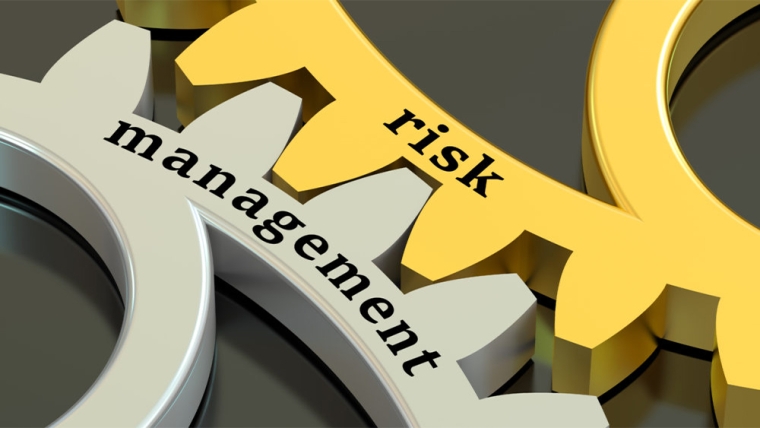
By Adam Perlaky. This content is sourced from the World Gold Council.
We’ve regularly discussed rates and inflation in 2021 as two key drivers of global markets.1 With lower expected future returns on fixed income, these drivers give credence to the idea that many institutional investors would need to move further out on the curve (take more risk) and/or use leverage to meet their financial obligations. Both of which now appear to be happening.
Alternative investment allocations are increasing as bond return expectations fall
Despite the upward trend in inflation numbers and rates expectations increasing, we continue to see lower yields, particularly in lower quality bonds, such as those labelled as “junk” or those with ratings BB or below. Currently, the nominal yield of the junk bond market is approximately 3.8% with an average duration (maturity date) of six years, compared to an overall global bond market yield of under 1%.2 Various reports, including our recent joint survey with Coalition Greenwich, indicate that investors are adding alternative assets like private equity, REITs, and hedge funds to their portfolios, but there is still a meaningful allocation to fixed income.3
Those bonds, however, offer lower yields. Endowments, for example, have recognised lower expected fixed income returns and have reduced their fixed income allocation to 21% on average, from levels as high as 40% a decade earlier. Larger endowments, for example, have an average allocation to illiquid private markets and alternatives of approximately 30%.4 Despite the smaller allocation to fixed income, it remains a relevant component in expected returns.
Endowment and pension liability requirements may struggle to be met
Examining the 134 largest public pension funds, their required liability returns have both a median and average required rate of return of 7%.5 For those funds, five-year returns have been 5.1% and 10-year returns have been 7.5%.6 But market expectations for equity returns over the coming years average around 5% and fixed income averages around 2%.7 Even with larger allocations to alternatives, it is clear that with low rates and equity return expectations, it will be difficult to achieve this moving forward, absent portfolio weighting adjustments - such as buying higher yielding but lower quality debt, or increasing portfolio leverage.
Yields between junk bonds and risk-free assets have compressed to levels last seen just before the financial crisis
The search for yield is evident when comparing the junk bond yield to US Treasuries (Chart 1). The compression of the spread, i.e., requiring less and less yield for riskier bonds has created market risks. The last time we saw the option adjusted spread OAS to US treasuries this low (2.7%) was just before the Global Financial Crisis (GFC).8 Recall too that outside of the subprime and traditional mortgage related causes, leverage was a significant driver.
Chart 1: Junk bond to 10-yr treasury yield spreads are at levels last seen just before the Global Financial Crisis
Spread between US High Yield Index (BB rated and lower) and similar US Treasury tenors

Source: Bloomberg, World Gold Council
Margin is at all-time highs
And it is leverage that we are now seeing in the markets, which have reached all-time highs at nearly US$600 trn as of June this year (Chart 2). Margin has worked well over the decade-long bull market, but again, the last time markets hit proportionately significant all-time levels, it marked the beginning of the GFC.
Chart 2: Margin at brokers and dealers is at all-time highs
Security Brokers and Dealers margin accounts

Released quarterly as of 10 June 2021. https://fred.stlouisfed.org/series/BOGZ1FL663067003Q
Source: Board of Governors of the Federal Reserve System (US), FRED, World Gold Council
Central bank actions in the near term could prompt sharp de-risking with current margin levels
Central banks - the Federal Reserve (Fed) in particular – find themselves in a difficult position. Inflation has moved sharply higher, much like it did before the GFC when CPI was 3%, and the economy is slowing as we risk stagflation. The Fed will need to taper, whether this year or next, and it will have to consider rate increases or risk the snowball effects of inflation. At that point, or at a point at which we see overvalued stocks fall for unforeseen reasons (exactly as we saw this week with Chinese real estate concerns), margin and leverage will need to fall, and riskier assets like junk bonds will likely sell off.
A sharp equity selloff - combined with deleveraging - in a period of minimal perceived ammunition from central banks could set the scene for the next “House of Cards”. When and if that time comes, it could indicate the need for a portfolio diversifier, just as it did in the last major market selloffs of 2008, 2011 and 2018, and more recently, during the COVID crisis.
Footnotes
1Investment Update: Rates pose risks but also unlock opportunities for gold and Investment Update - Beyond CPI: Gold as a strategic inflation hedge
2Based on the yield-to-worst of the Bloomberg US Corporate High Yield Bond Index and the Bloomberg Global Aggregate Bond Index.
3Rethink, Rebalance, Reset: Institutional Portfolio Strategies for the Post-Pandemic Period, 8 July 2021.
42020 NACUBO-TIAA Study of Endowments. Table prepared February 2020.
5National Association of State Retirement Admins 2021.
62020 NACUBO-TIAA Study of Endowments.
7JP Morgan and Blackrock 2021.
8The option-adjusted spread (OAS) helps investors compare cash flows of a fixed-income securities to reference rates while also valuing embedded options against general market volatility. By separately analysing the security into a bond and the embedded option, analysts can determine whether the investment is worthwhile at a given price. The OAS method is more accurate than simply comparing a bond’s yield to maturity against a benchmark. - Investopedia
![]() Our free weekly precious metals email brings you weekly news of interest to precious metals investors, plus a comprehensive list of gold and silver buy and sell prices.
Our free weekly precious metals email brings you weekly news of interest to precious metals investors, plus a comprehensive list of gold and silver buy and sell prices.
To subscribe, log in or Register, and sign up in your Account page. It's free.
Comparative pricing
You can find our independent comparative pricing for bullion, coins, and used 'scrap' in both US dollars and New Zealand dollars which are updated on a daily basis here »
Precious metals
Select chart tabs
7 Comments
If I have a strong enough conviction in a spectacular market crash, I probably would be shorting junk bonds and high yield ETFs.
So are you?
Box of liquid courage and into it on a Saturday
The question is what is the likely Central Bank policy response to a Debt Crisis. The policy response to all Crises since 2008 through to Covid has been QE and lower cash rates. Where is the point in a Debt crisis where this is not longer possible or effective? If we get to that point then its time to worry. Its likely the Central banks will buy up even lower quality Corporate debt. If they don't then they have reached a point where the can cannot be kicked any further.
Yeah I think we're pretty close and I think central banks know that.
If inflation gets out of control they will have to raise rates and that will destroy the economy, but if we slip into deflation, with this amount of debt in the system, the defaults will start very rapidly. And the bigger problem, is that we're getting very bad bang for our buck in terms of the amount of debt governments are creating, relative to the productivity (GDP growth) that is achieved in return and the ability to service the interest on the additional debt created.
And the bigger problem, is that we're getting very bad bang for our buck in terms of the amount of debt governments are creating, relative to the productivity (GDP growth) that is achieved in return and the ability to service the interest on the additional debt created.
We’re often led to think about risk from the perspective of credit loss, defaults and whatnot. In Japan’s experience, and we can unfortunately relate, that’s not what has driven deflationary financial behavior nor would it as 2017 turned to 2018.
Loss in the liquidity sense is equally simple yet either misunderstood or ignored entirely; at least in the academic sense, after all the whole point here is that while academics pay little attention to liquidity risks, survival in any of these marketplaces demands it be taken as the first priority.
Credit risk is the risk of a missed payment – such as in China earlier this week when a troubled real estate developer by the name of Evergrande failed to produce on a scheduled coupon surprising absolutely no one. Liquidity risk, by contrast, is when you think you own a dependable security that makes you think it is dependable because it’ll be easy to sell should the need ever arise.
Therefore, the risk here is far less to do with credit or coupons. The market for a dependable security just might dry up without notice, leaving the security dependable only in terms of its credit characteristics yet forcing you to stare at a potential loss anyway, and maybe even a sizable loss, because there may not be nearly liquid enough buyers for it.
In this systemic situation, very understandably (once made aware) participants would steer clear of this type of uncertainty. Naturally, then, they would limit themselves – absent gigantic returns – to those instruments which actually trade in dependably liquid markets, and even more to those with the very least of questionable reliability.
Whether Japan or elsewhere, for a long time this has meant government bonds. Link
That's assuming that governments don't default though...right?

We welcome your comments below. If you are not already registered, please register to comment
Remember we welcome robust, respectful and insightful debate. We don't welcome abusive or defamatory comments and will de-register those repeatedly making such comments. Our current comment policy is here.